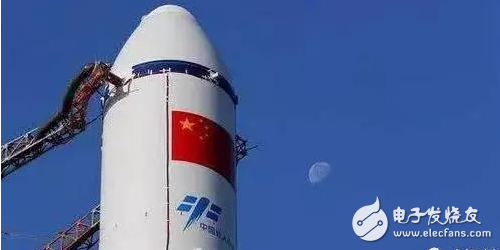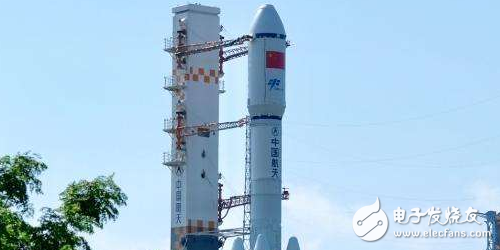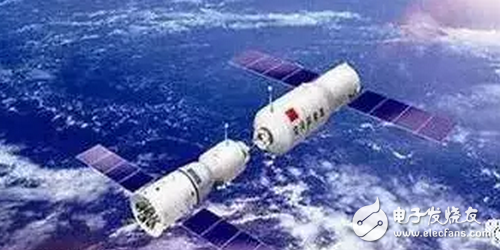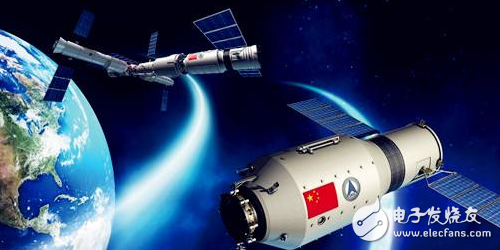China’s first cargo spacecraft, Tianzhou No.1, was launched at the Wenchang Space Launch Site in Hainan at 19:41 on the 20th. It was launched by the new launch vehicle Long March 7. Since this mission is the first practical appearance of the space transportation cargo transportation system consisting of the Tianzhou-1 cargo spacecraft and the Long March 7th, the outside world has paid great attention to this launch. In the end, what are the magical skills of this "only cargo, no delivery" spacecraft strongman? What are the highlights of this mission? First, the Tianzhou "big belly can load" According to Xu Xiaoping, deputy chief designer of Tianzhou No.1, the Tianzhou series cargo spacecraft is an important part of the manned space station project in the “three-step†strategy of China’s manned spaceflight project. According to him, Tianzhou No.1 is 10.6 meters tall and 3.35 meters wide. It can transport more than 6 tons of cargo. The maximum weight of the whole ship is 13.5 tons. What goods are in the "big belly" of Tianzhou-1? Huang Weifen, deputy chief designer of the aerospace engineering system for manned spaceflight, revealed that the mission of Tianzhou-1 will verify the effectiveness of the cargo package in transportation, transportation, information management, delivery, loading and microbial control. The goods mainly focus on the life and health protection of 3 people for 30 days, such as aerospace food, drinking water, personal hygiene cleaning products, waste disposal items, medical insurance medical insurance items, etc. They should choose different packages according to size, category and quantity. Fixed to the cargo hold bracket. According to her introduction, the mission will also be equipped with extra-space spacesuit structural clothing. We have only conducted an astronaut out of the cabin before, so I hope to obtain more data through this mission, and provide a basis for the design of future cabin suits. In order to give full play to the carrying capacity of the Tianzhou No. 1, the ship is also equipped with dozens of load equipment, and a number of tests will be carried out in orbit. According to the "Global Times" reporter, this big guy is equipped with four packages of 70 kilograms in total, including a 27 kilogram fresh vegetable package, in order to allow astronauts to adopt early in space. Second, the first challenge "zero window" launch The launch window refers to a time range in which the launch vehicle carries a spacecraft to launch a space, some in hours, and some in days, during which the rocket can be launched. Since the Tiantan No. 1 is going to rendezvous with the Tiangong No. 2 Space Laboratory, the requirements for the accuracy of the launch are very high. Therefore, the launch window is a certain point in time, and one second cannot be bad. This is what the astronauts say. Zero window" puts high demands on the reliability of the rocket and launch site system. According to reports, because the Long March 7 rocket uses a full-temperature liquid oxygen kerosene power system, the process before launch is complicated, and the launch window will be missed if there is a problem in one link. Hu Xiaojun, assistant chief designer of the Long March 7 rocket, said that when the first flight of the Long March 7 was launched in June last year, it was launched in accordance with the scheduled launch time, which was verified by this zero window launch, plus we The launch of the rocket has undergone a series of improvements, so there is confidence in the zero-window launch. Third, the first implementation of "space refueling" After China has built a space station in the future, the time of the astronauts on the track is not estimated in 30 days. It may be hundreds of days. How can the fuel of the space station be added? The answer is that this task is also completed by the Tianzhou series of cargo ships. It is understood that before the Tianzhou No. 1, the only countries that mastered this technology were Russia and the United States. In this mission, Tianzhou No.1 and Tiangong No.2 will implement China's first propellant addition in orbit, break through and master the propellant supplement technology, and clear up the energy supply problem for the assembly and long-term operation of China's space station. The last obstacle. What is the difference between "space refueling" and our usual refueling on land? According to the "Global Times" reporter, after the docking of Tianzhou No. 1 and Tiangong No. 2, the propellant was continuously transported from Tianzhou No. 1 to Tiangong No. 2 through the gas pressure between the two spacecrafts. Although it seems to be similar to the ground, it is not easy to achieve it. It must ensure that its reciprocating and docking accuracy is doubled and the sealing requirements are met. The propellant must not leak. Fourth, the spacecraft is fully autonomous and fast docking China's previous manned space missions have successfully achieved manual and automatic rendezvous and docking. The Tianzhou-1 and Tiangong 2 will realize three rendezvous and docking, which is the first time in the history of China's manned space flight. After the docking of Tianzhou-1 and Tiangong-2, the retention time of the assembly will be much higher than before. According to reports, when transporting astronauts to the International Space Station, it usually takes 2-3 days to rendezvous and dock. However, since 2012, Russia has successfully implemented seven rapid rendezvous and docking tests using the Progress Freight Cargo and the Alliance Manned Spacecraft and the International Space Station. The mission of the Tianzhou-1 will also verify the rapid rendezvous and docking, which takes only a few hours from the track to the docking success. In other words, if we set off at the same time as the astronauts, we took the high-speed train from Beijing to Shanghai. When we were still on the train in Shanghai, the astronauts had already greeted us in the distant space station. What is the significance of this "fast"? From the human aspect, it can shorten the time that astronauts stay in the space of the spacecraft and reduce the unnecessary physical strength and energy of the astronauts. From a mission perspective, rapid rendezvous and docking can also ensure that scientific supplies, especially biological agents, and other items that cannot undergo long-term transportation are delivered to the space station as soon as possible, which is crucial or even decisive for some tests. From a safety point of view, if a spacecraft such as a space station encounters an emergency, a quick rendezvous and docking can quickly perform repairs and emergency rescue operations. Fifth, the first active off-track controlled fall After the completion of the mission, the general satellite will slowly reduce the orbital height as the propellant is exhausted, and finally end the service life in the form of atmospheric burning. According to experts, Tianzhou No. 1 will adopt the active off-track method for the first time, and it can be controlled to fall into the predetermined area, avoiding itself becoming space junk, avoiding uncontrollable factors in the process of derailment, and creating cleanliness, A safe space environment makes its own contribution. Does this technology mean that China has advanced levels in relevant international fields? Xu Xiaoping believes that this does not represent the advanced nature of technology, and represents China's environmental awareness in the aerospace industry is a very useful attempt to reduce space debris. According to him, after the end of the mission, Tianzhou No. 1 will make active off-track through ground flight control staff decision-making, and will controlly fall into the designated area of ​​the South Pacific through two derailed control. YIWU JUHE TRADING COMPANY , https://www.nx-vapes.com



